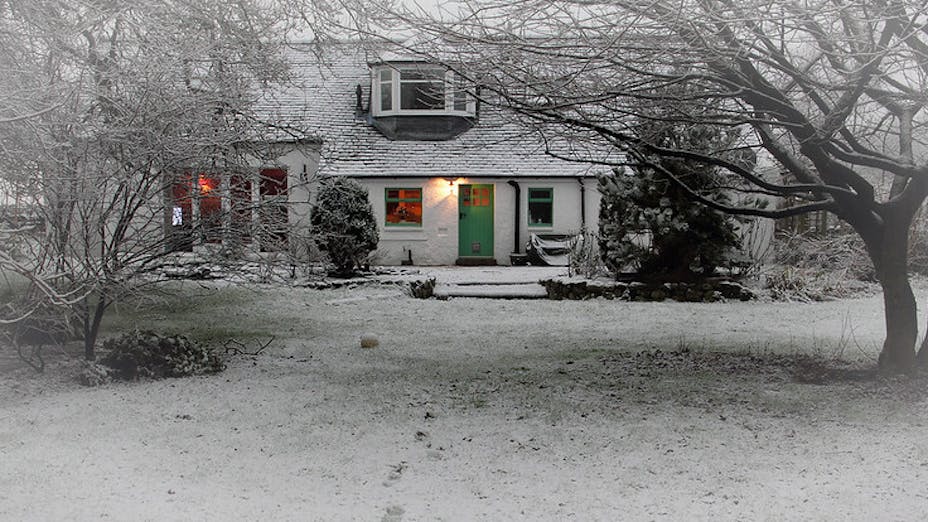It’s that time of year again – winter is here and in full swing. This means that residential buildings and houses, especially older ones, will feel the chill throughout these months. In Europe alone, between 50 and 125 million people cannot afford proper thermal comfort indoors. When piles of blankets and fuzzy socks just don’t cut it, you have to look elsewhere to find out how to keep your house warm during this winter.
According to Eurostat, 64 percent of energy consumption in European households went to heating residences in 2017. You can easily reduce this percentage by using a variety of methods. As energy is a major expense in every household, finding workarounds and ways to prevent heat from dissipating can help you save money while staying warm in the coming months.
As you press into the new year, keep these tips in mind to keep your home warm in the winter.
How to keep your house warm in winter
Winter weather can be detrimental to your indoor haven. Humans spend around 90 percent of their time indoors, so it’s in your best interest to safeguard your own home and ensure that warm air circulates throughout.
1. Treat your home to some proper insulation
Likely the most important solution on this list, it’s important to make sure that your home is properly insulated at all times. Proper insulation can reduce energy consumption by up to 70 percent, meaning that you’ll be saving money on your energy and utility bills. You can also adjust the thickness of your insulation for even better results.
If your home is older, you should consider renovating your home to make way for more energy-efficient features. Stone wool insulation has seven core strengths harvested from the power of stone, making it an effective insulation material.
2. Utilize timers and install programmable thermostats
If your radiator or boiler has a timing capability, where you can program how long for it to run, you should utilize it. Not only does it save you hot water but it also saves fuel by lowering the amount that you use – or don’t use.
You should aim to program your heating to come on around half an hour before you wake up. Similarly, you can set your heating to turn off half an hour before you leave your house. Controlling your central heating in such a way allows you to get the most out of your heat, as it takes a while to heat up a house, as well as subsequently lose heat.
3. Keep heat from escaping through your fireplace
If you have a fireplace, you should have a fireplace plug. Houses without a fireplace plug can lose incredible amounts of heat and boost your energy consumption. Plugging your fireplace when you’re not using it helps seal the flue, keeping the warm air in, and is just another answer to how to keep your house warm in winter.
4. Make sure your radiators aren’t obscured
Although radiators aren’t the most attractive appliances, they remain the primary source for heat in most homes. You may be tempted to cover them up or obscure them with furniture, but that actually reduces their efficiency. To get the most out of your radiators, remove any covers and move away all items that are blocking them from view. This will allow heat to disperse into the room instead of being absorbed by other objects. Also, remember you should never cover any electric radiator with a cloth or another flammable material, as it is a major fire hazard.
5. Invest in radiator reflective panels
Bouncing off of the previous suggestion, here’s another tip to ensure that your radiator provides you with optimum heat. If your radiator is near an insufficiently insulated external wall, you may notice that some of the heat escapes to the outdoors. The best way to combat this occurrence is by purchasing radiator reflective panels. These panels, which go between your radiator and the external wall, exist to bounce the heat away from the wall and back toward the rest of the room – improving your energy efficiency in the process.
You can even create your own reflective panels by placing aluminum foil between your radiator and the external wall. Whether you buy your panels or make them yourself, you can be sure that reflecting heat back into the room is another efficient solution for keeping your house warm in winter.
6. Keep any open areas covered
If your house is a bit older, you may notice that there are places that have begun to crack – or maybe, you notice you’re using more energy every winter. Whichever it is, you can be sure that warm air is probably sneaking out of unknown openings. Those gaps encompass not only cracks and the wear and tear that come with age, but also built-in structures like mail slots and dog doors. Simple weather stripping can prevent your precious warm air from leaking through your dog’s door.
7. Use the existing elements of your house strategically
Even decorative items and everyday appliances can serve to keep the warm air circulating through your home. One of the simplest tactics is to leave the oven door open after cooking a meal. With decent insulation, that leftover heat won’t go to waste and will instead fill up the room, warming up your entire kitchen as the oven cools down.
Another way to ensure you use sources of ambient heat effectively is by opening your curtains during the day. This will allow sunlight to heat the house. After sunset, ensure you close all your curtains to retain as much of that precious warmth as possible.
New year, new methods of collecting warm air
This year, don’t put the warmth in your indoor haven on the backburner. Make sure that your house supports you throughout winter by preventing the cold air from getting inside. By following the suggestions above, you should be able to keep the house warm in winter. Installing extra insulation could be a make-or-break factor when it comes to staying warm this winter.
Just because you embrace the holiday season doesn’t mean you have to invite the frigid weather inside to celebrate with you.






